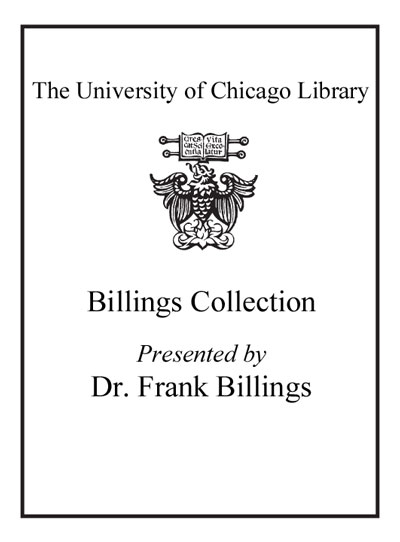Textbook of work physiology : physiological bases of exercise /
Saved in:
| Edition: | 4th ed. |
|---|---|
| Imprint: | Champaign, IL : Human Kinetics, c2003. |
| Description: | v, 649 p. : ill. (some col) ; 29 cm. |
| Language: | English |
| Subject: | |
| Format: | Print Book |
| URL for this record: | http://pi.lib.uchicago.edu/1001/cat/bib/5550039 |
Table of Contents:
- Preface
- Chapter 1. Our Biological Heritage
- Development of Primitive Organisms
- Appearance of Mammals
- Differentiation of Life
- Emergence of Primates
- Modern Human Evolution
- The Mobile Human
- Summary
- Chapter 2. The Cell and Its Regulatory Mechanisms
- The Cell
- Energy Metabolism
- Intercellular Communication
- Common Cellular Strategies for Adaptation to New Demands
- Summary
- Chapter 3. The Muscle and Its Contraction
- Skeletal Muscle Architecture
- Interaction of Actin and Myosin
- Force Transmission From Muscle Fiber to Tendon
- Muscle Fiber Types and Their Molecular Basis
- Types of Muscle Activation
- Mechanical Efficiency of Muscle Contraction
- Storage and Utilization of Elastic Energy
- Chapter 4. Motor Function
- Basic Structure and Function of Neurons
- Motor Units, Effectors of the Motor System
- The Role of Sensory Systems and Reflexes in Motor Function
- Motor Control
- Motor Function in a Lifelong Perspective
- Autonomic Nervous System
- Chapter 5. Body Fluids, Blood, and Circulation
- Body Fluids
- Blood
- Heart
- Hemodynamics
- Blood Vessels
- Regulation of Circulation at Rest
- Regulation of Circulation During Exercise
- Cardiac Output and the Transportation of Oxygen
- Chapter 6. Respiration
- Anatomy and Histology
- Mechanics of Breathing
- Volume Changes
- Pulmonary Ventilation at Rest and During Exercise
- Diffusion in Lung Tissues, Gas Pressures
- Ventilation and Perfusion
- Oxygen Pressure and Oxygen-Binding Capacity of the Blood
- Regulation of Breathing
- Breathlessness (Dyspnea)
- Second Wind
- High Air Pressures and Breath Holding--Diving
- Chapter 7. Skeletal System
- The Tissues of the Human Skeletal System
- Joints
- Adaptive Capacity of the Skeletal System
- Chapter 8. Physical Performance
- Demand Versus Capability
- Aerobic Processes
- Anaerobic Processes
- Lactate Production, Distribution, and Disappearance
- Interaction Between Aerobic and Anaerobic Energy Yield
- Maximal Aerobic Power--Age and Sex
- Anaerobic Power--Age and Sex
- Muscle Strength--Age and Sex
- Performance in Sports--Women Versus Men
- Genetics of Physical Performance
- Chapter 9. Evaluation of Physical Performance on the Basis of Tests
- Tests of Maximal Aerobic Power
- Evaluation of Anaerobic Power
- Muscular Strength
- Specific Tests for Specific Performance
- Chapter 10. Body Dimensions and Muscular Exercise
- Scaling of Body Dimensions
- Functional Significance of Body Dimensions
- Conclusion
- Chapter 11. Physical Training
- Training Principles
- Strength Training
- The Molecular Biology of the Strength-Training Response
- Metabolic Adaptations in Muscle
- The Effect of Detraining and Inactivity
- Adaptations in the Oxygen-Transporting System
- Hormonal Responses to Exercise
- Other Training-Induced Changes in the Body
- Genetic Factors in the Training Response
- Unwanted Effects of Training
- Chapter 12. Nutrition and Physical Performance
- Nutrition in General
- Digestion
- Energy Metabolism and the Factors Governing the Selection of Fuel for Muscular Work
- Regulatory Mechanisms
- Food for the Athlete
- Physical Activity, Food Intake, and Body Weight
- Chapter 13. Temperature Regulation
- Heat Balance
- Effect of Climate
- Effect of Exercise
- Physiology of Temperature Regulation
- Acclimatization
- Limits of Tolerance
- Water Balance
- Working Environment: Practical Application
- Chapter 14. Factors Affecting Performance
- High Altitude
- Tobacco Use
- Alcohol and Exercise
- Caffeine
- Chapter 15. Fatigue
- General Physical Fatigue and Its Symptoms
- Muscle Fatigue
- Fatigue Attributable to Processes Beyond the Neuromuscular Junction--Peripheral Fatigue
- The Role of Metabolic Factors in Muscle Fatigue
- Measurement of Human Muscle Fatigue
- Muscle Fatigue in Everyday Life
- Chapter 16. Applied Sport Physiology
- Analysis of Specific Athletic Events
- Chapter 17. Applied Work Physiology
- Factors Affecting Work Performance
- Assessment of Workload in Relation to Work Capacity
- Energy Expenditure of Work, Rest, and Leisure
- Working in the Heat
- Working in the Cold
- Vibration
- Noise
- Circadian Rhythms and Performance
- Chapter 18. Physical Activity and Health
- Health Effects of Physical Inactivity
- Physical Fitness for Everyday Life
- Physical Activity in the Prevention of Various Diseases and Disorders
- The Significance of Physical Activity for Children and Youths
- Physical Activity and Aging
- Physical Activity and Pregnancy
- Conclusions: Recommendations for Physical Activity and Health
- Appendix A. Definition of Units
- Appendix B. Prefixes for Unit Abbreviations
- Appendix C. Conversion Tables
- Appendix D. Symbols
- Glossary
- References
- Index
- About the Authors


